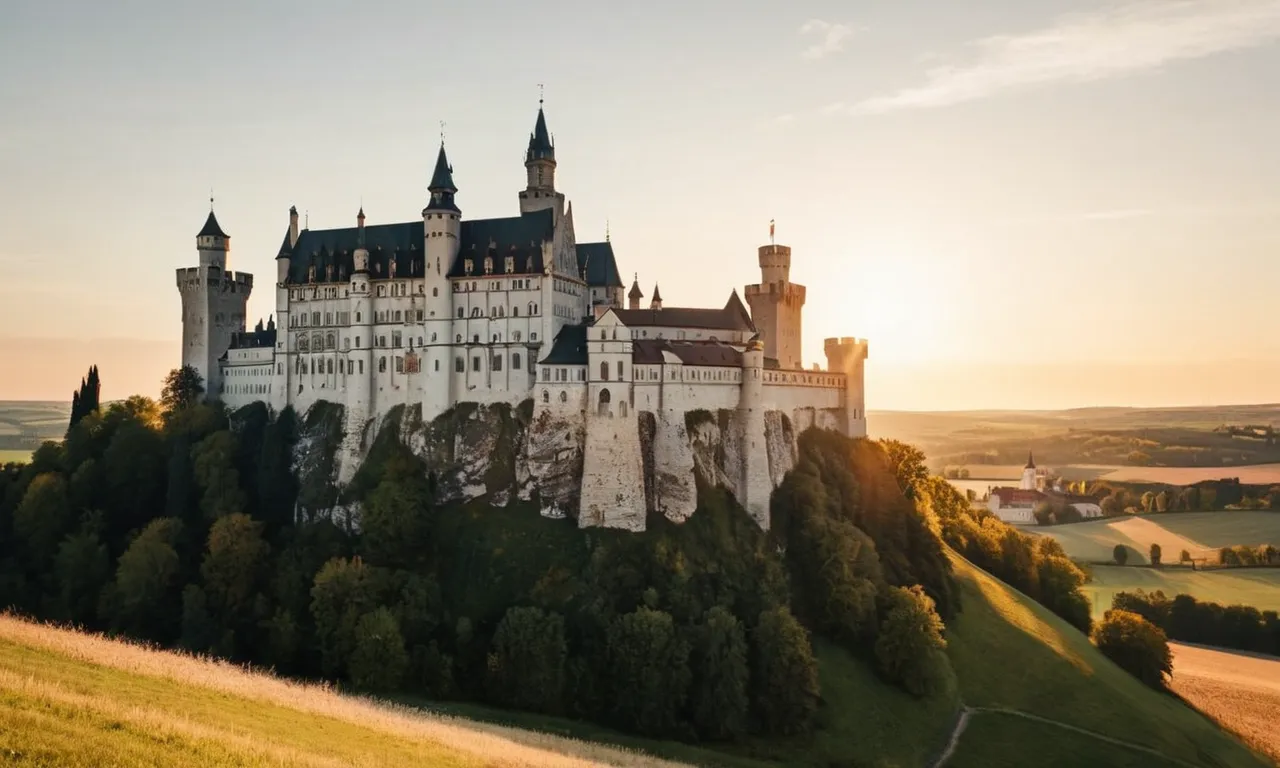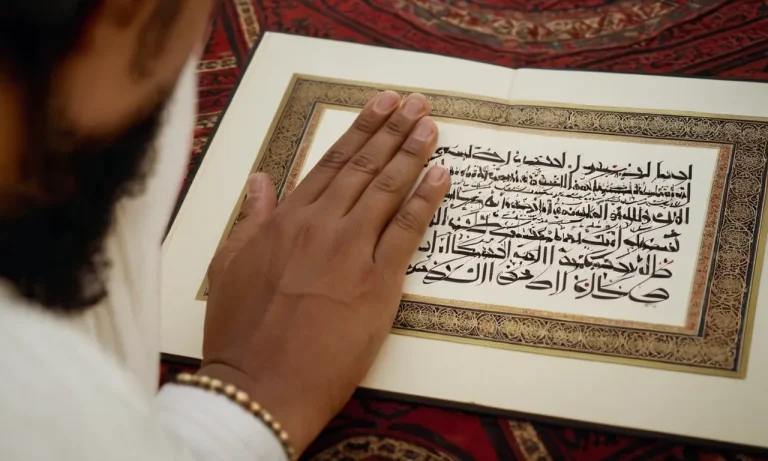When Did The Holy Roman Empire Exist?
The Holy Roman Empire has captured people’s imaginations for centuries. Its name alone evokes images of medieval splendor and papal authority. If you’re short on time, here’s a quick answer to your question: The Holy Roman Empire existed from 962 to 1806.
In this comprehensive article, we will explore the full history of the Holy Roman Empire. We will cover key questions like: When was it established? What were its key characteristics? When did it fall? Read on for a deep dive into one of history’s most fascinating political entities.
The Origins of the Holy Roman Empire
Charlemagne and the Carolingian Empire
The Holy Roman Empire has its origins in the early Middle Ages with Charlemagne. As the King of the Franks, Charlemagne united a large portion of western and central Europe during the late 8th and early 9th centuries. In 800 A.D., Pope Leo III crowned Charlemagne as “Emperor of the Romans”.
This established the Carolingian Empire, which spanned modern-day France, Germany, northern Italy and beyond. Charlemagne sought to revive the ancient Roman Empire in western Europe. He instituted administrative reforms, promoted education and spread Christianity.
Though his empire fragmented after his death, the imperial title continued in his Carolingian dynasty.
Otto I Revived the Roman Empire
After Charlemagne’s death, the Carolingian Empire declined and eventually dissolved. In 962 A.D., Otto I the Great, the King of Germany, revived the imperial title when Pope John XII crowned him as the “Emperor of the Romans”. This marked the birth of the Holy Roman Empire.
Otto I focused on strengthening imperial authority in Germany and Italy. He consolidated the German duchies under Imperial control and expanded eastwards against the Magyars and Slavs. To legitimize his imperial title, Otto I aimed to revive the glory of ancient Rome within his empire.
This laid the foundations for the complex political entity known as the Holy Roman Empire, which would last until 1806.
The Height of Imperial Power
Consolidation Under the Salian Dynasty
The Holy Roman Empire reached the height of its power under the Salian dynasty in the 11th century. Emperor Conrad II expanded imperial authority into Italy, Burgundy, and Bohemia. His successor Henry III asserted imperial prerogatives over the Papacy itself, presiding over the deposition of three rival popes in 1046 and monopolizing the selection of new popes.
This ushered in the era of the Imperial Papacy, with popes serving primarily as figureheads under imperial control until the Investiture Controversy erupted late in the 11th century.
The Investiture Controversy was a power struggle between the Holy Roman Emperor and the Catholic Church over the right to appoint church officials and bishops. At its heart was the issue of lay investiture, the appointment of clergy by secular rulers.
Pope Gregory VII sought to end this practice and free the church from imperial control, while Henry IV fought to retain traditional royal privileges. Their conflict came to a head in 1077 when Henry tried to depose Gregory.
In response, Gregory excommunicated and deposed Henry, absolving his subjects from obedience. Their struggle continued through the 1080s, ending in compromise with the Concordat of Worms in 1122. Though Henry was humbled, the emperor maintained influence in church affairs.
The Clash Between Emperors and Popes
The Investiture Controversy weakened imperial power and set the stage for conflict between emperors and popes throughout the 12th century. Emperor Henry V continued pressing church reform and renewing claims on Italy.
This prompted Pope Innocent II to ally with the Norman Kingdom of Sicily against imperial interests. Political chaos in Germany during a subsequent dynastic struggle left the emperor unable to counter papal aggression.
By the 1150s, the Papacy had consolidated control over Rome and central Italy, breaking away from imperial authority.
In 1122, Emperor Henry V and Pope Callixtus II reached the Concordat of Worms resolving the Investiture Controversy. The compromise allowed secular rulers some say in the appointment of bishops in their realms, while confirming papal authority to appoint or confirm bishops anywhere and denying lay investiture through ring and staff.
Despite concessions by both sides, the underlying dispute over the division of power between emperor and pope was not fully settled.
The Holy Roman Empire would remain formally at odds with the Papacy for much of the 12th and 13th centuries. Struggles between Emperor Frederick I Barbarossa and Pope Alexander III in the 1160s prompted the first overt alliance between the Papacy and Italian city-states like Milan.
By the early 1200s, the emperors would be forced to recognize the political autonomy of northern Italian cities, marking the effective end of imperial claims on Italy.
In the 16th century, Martin Luther’s Protestant Reformation opposed the Papacy’s continued corruption and power. It found support from German princes and freethinking cities. Though it weakened the empire’s religious unity, the promising upheaval helped inspire continued imperial reform.
The Decline of Central Authority
The Great Interregnum
The Holy Roman Empire entered a period of decline in the mid-13th century, marked by a decentralization of power and prolonged political instability. This phase is known as the Great Interregnum and lasted from 1250 to 1273.
During this time, there was no Emperor on the throne, leading to a power vacuum in the Empire.
After the death of Emperor Frederick II in 1250, a series of short-lived and ineffective rulers tried to claim the imperial title. However, the Electors could not agree on a candidate, resulting in a 23-year interregnum with no crowned Emperor.
The Imperial authority drastically declined during this vacuum of power.
The Imperial diet or Reichstag was unable to meet during this period, leading to a halt in vital decision making for the Empire. This paralyzed the Imperial government and prevented unified action in policymaking, taxation or justice.
With no strong central authority, the Imperial princes became increasingly independent and consolidated their power in their own territories. They imposed taxes, minted coins, waged wars and made laws, effectively governing autonomously within the Empire.
Some historians see the Great Interregnum as a transitional period in the Empire’s shift towards a more decentralized, prince-dominated polity. This decline of centralized power under an Emperor would become more entrenched in later centuries.
Decentralization of Power to Princes
During the 14th and 15th centuries, the Holy Roman Empire underwent a steady process of decentralization as power drained away from the Emperor to the local princes and nobility.
The Imperial Diet or Reichstag evolved into an important instrument for the princes to coordinate policy and check the Emperor’s power. The composition and powers of this Imperial assembly developed in a way that benefited the princes and clergy.
At the same time, the Emperor lacked the resources to exert centralized control over the hundreds of quasi-independent states within the Empire. Imperial authority rested primarily on inherited family domains, which were quite small by the late Middle Ages.
Thus, the Emperor had to rely on the compliance and cooperation of the princes to implement any policies or raise taxes. This gave the princes leverage to demand privileges and freedoms from Imperial control.
The princes consolidated their own territorial power by centralizing their bureaucracies, building professional armies and imposing taxes. Their domains became the real locus of power and administration within the Empire.
For example, the Habsburg dukes of Austria grew from a small county in the 10th century to one of the most powerful principalities in the Empire by the 15th century. Through astute marriages and inheritances, they amassed vast territories over which the Emperor had little control.
Thus the Empire essentially evolved into a decentralized, federated polity where hundreds of largely sovereign princes, bishops and cities dominated the political landscape. The Emperor retained prestige and some powers but relied heavily on the goodwill of the princes to exercise meaningful authority.
The Empire Survives as a Hollow Shell
Lack of Imperial Reforms
The Holy Roman Empire entered a period of decline in the 17th and 18th centuries as it failed to implement key imperial reforms. Despite having an elected emperor, the empire lacked centralization and was fragmented into hundreds of small states and principalities.
This decentralization enabled local rulers to pursue their own interests rather than those of the empire as a whole.
Attempts by emperors like Charles V and Joseph II to centralize power were largely unsuccessful. The Imperial Diet, comprised of princes and clergy, stubbornly resisted reforms that would have taken away their privileges.
The emperors were unable to establish uniform taxes, administrative systems, or armies across the vast empire. This lack of unity left the empire vulnerable in the face of external threats.
The empire also declined economically in this period. Trade barriers between the various states hindered the growth of commerce. The empire failed to develop a truly integrated economic system like those emerging in England and France.
Agricultural productivity stagnated under the constraints of serfdom. Intellectual and cultural life declined as well, as the Counter-Reformation stifled innovation across much of the empire.
Rise of Prussia and Austria
As the Holy Roman Empire weakened, two powerful states rose to prominence within it: Prussia and Austria. Located mainly outside the empire’s borders, Prussia and Austria steadily consolidated their power. Prussia became an economically dynamic state, with an army respected across Europe.
Austria gained control of lands from Hungary to the Netherlands under the Habsburgs. These two states increasingly overshadowed the elected emperors.
Tensions grew between Prussia and Austria as each sought to dominate the empire. Their rivalry contributed to the empire’s fragmentation, as smaller states were forced to ally with one side or the other.
Prussia and Austria fought wars in 1740-48 and 1756-63 that proved the essential powerlessness of the emperor. The decline of imperial authority enabled Prussia and Austria to act without regard for the well-being of the Holy Roman Empire as a whole.
By the late 18th century, the Holy Roman Empire had become a mere shadow of its former self. It lacked the unity and strength needed to withstand the forces of change unleashed by the French Revolution.
Though the empire staggered on until 1806, real power had shifted to Prussia, Austria and the regional princes and bishops. The empire’s failure to reform ultimately led to its collapse.
The Dissolution of the Holy Roman Empire
Napoleon’s Invasion of Germany
In the late 18th century, the Holy Roman Empire was already in decline when it suffered a fatal blow from Napoleon Bonaparte of France. In 1803, Napoleon invaded the German states and by 1806 had occupied much of the Empire’s territory.
The Empire could not mount an effective resistance against the mighty French army.
Napoleon decisively defeated the Austrians at the Battle of Austerlitz in 1805. This stunning victory allowed Napoleon to abolish the Holy Roman Empire altogether. He believed that a weakened Germany would enable him to dominate central Europe.
According to the authoritative website German History in Documents and Images (http://germanhistorydocs.ghi-dc.org/sub_document.cfm?document_id=3795), Napoleon remarked: “The Empire of Charlemagne must be destroyed.”
Francis II Abdicates in 1806
After occupying the German states, Napoleon established the Confederation of the Rhine in July 1806 as a French satellite state. According to Britannica (https://www.britannica.com/event/Confederation-of-the-Rhine), this confederation was a political union of German princes that allied with France against the Holy Roman Emperor Francis II.
With the Confederation of the Rhine leaving him, Francis II had no choice but to dissolve the Holy Roman Empire. On August 6, 1806, Francis II abdicated the title of Holy Roman Emperor, ending its nearly 1000-year existence.
According to the Encyclopedia Britannica (https://www.britannica.com/event/German-Confederation), he said, “Acknowledging that the imperial title, crown, and government were ended, we hereby release those thereunto called from their oath and duty.”
The dissolution of the Holy Roman Empire marked the end of an era in European history. Its once powerful empire had crumbled in the face of Napoleon’s military brilliance. But its rich legacy and influence on Germany and Central Europe would persist for centuries to come.
Conclusion
For nearly 850 years, the Holy Roman Empire played an immense role in European politics and society. Its longevity is a testament to the enduring power of the imperial ideal. Even as real authority decentralized, the aura of the Roman Empire gave legitimacy to rulers of central Europe.
The Holy Roman Empire may be gone, but its legacy lives on. When we think of medieval Europe, it is the Holy Roman Empire that often first comes to mind. Its unique blend of imperial ambition and Germanic culture created an enduring chapter in the story of Western civilization.








